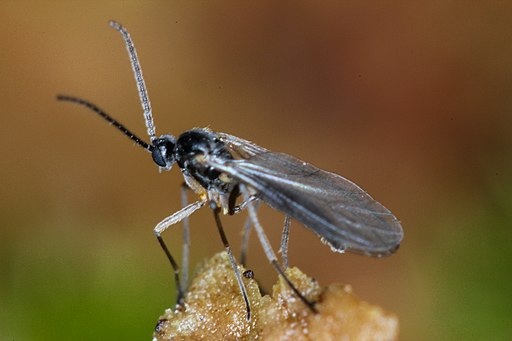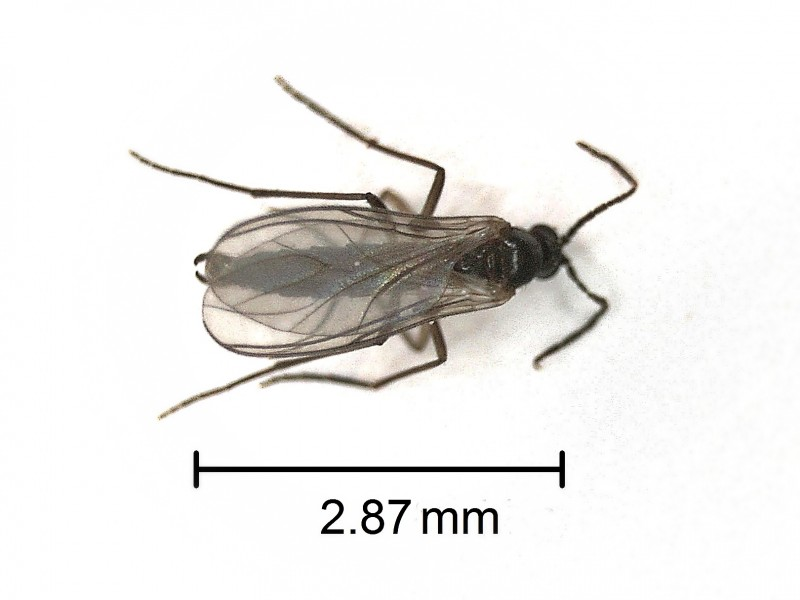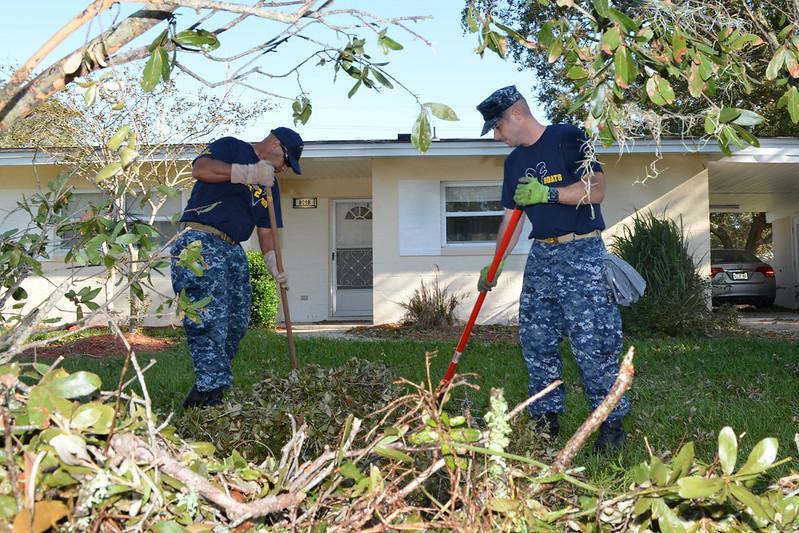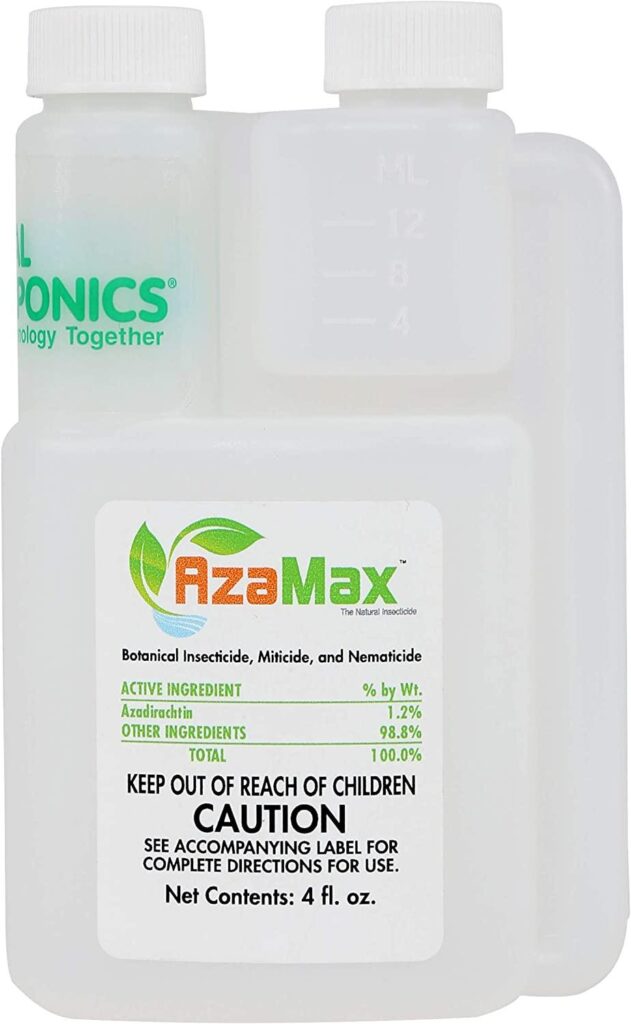You could be looking at fungus gnats and mistaking them for fruit flies, or you could have heard an old wives’ story that fungus gnats are baby fruit flies. And, we won’t blame you because these two bugs have a striking resemblance. Fungus gnats are tiny gnats around the size of a mosquito that are damaging to plants, especially seedlings. They do this by causing damage to plant roots and by also spreading diseases among plants. In this article, read and find out how to get rid of fungus gnats.

Often considered a minor houseplant pest, fungus gnats can quickly become a severe nuisance.
That gives us a good reason to be careful about fungus gnats and to know how to get rid of them if you notice them around your plants.
Several DIY methods can be used to prevent a fungus gnat infestation, such as checking the soil before buying new plants, removing plant debris, adding more sand to the potting soil, and covering drainage holes. However, if an infestation does occur, you can use sticky cards, apple cider vinegar, insecticidal soap, flying insect spray, and a few other organic and chemical methods to get rid of fungus gnats.
What Are Fungus Gnats? Fungus Gnat Identification

Fungus gnats are tiny insects that live in warm, damp houseplant soil and outdoor compost.
Insects from the families Sciaridae, Ditomyiidae, Diadocidiidae, Bolitophilidae, Keroplatidae, and Mycetophilidae are commonly referred to as fungus gnats. That concludes our discussion of zoology for today. Let us now move on to more fundamental topics, such as their appearance and various characters.
Adult fungus gnats range in size from 0.1 to 0.3 inches and are gray to black in color. Because of their size and color, spotting them shouldn’t be difficult at all. Fungus gnats are distinguished from other flies and gnats by their long, tiny legs and a pair of segmented antennae above their heads.
They have antifreeze proteins that allow them to survive in freezing temperatures, contributing to their incredible tenacity and ability to withstand extreme cold.
They are poor flyers and can be observed patrolling the ground or the leaves. Their wings are translucent and have a grayish hue to them.
As soon as they go into the air, they will repeatedly fly directly into your eyes, nose, and face until you react to them. Attention seekers, aren’t they?
Related: What Are Gnats Cacti and How to Get Rid of Them for Good?
How Do Fungus Gnats Spread?

Fungus gnats reproduce in decomposing organic debris such as leaf litter in wet, shady areas.
Like most insects, the life cycle of fungus gnats consists of four distinct phases: the egg, the larva, the pupa, and the adult. Adult females are capable of laying anywhere from 30 to 200 eggs in a single batch, and they do so on decomposing organic debris.
The eggs hatch in three days at a temperature of 21 to 23 degrees Celsius. As soon as the eggs hatch and the larvae are free to roam, they immediately start feeding on the decomposing organic debris and the fungi. Fungus gnat larvae resemble tiny white worms with a glinting grayish-black head.
Within ten days, the larvae complete the metamorphosis into the pupae stage by encasing themselves in a cocoon composed of very fine threads. The pupa stage lasts four days, after which the adult fungus gnats emerge.
These adult fungus gnats only live for eight days and mate before dying.
The entire life cycle can be completed in anywhere from three to four weeks, depending on the temperature. Hotter temperatures cause fungus gnats to become more agitated and increase their reproduction.
Damage Caused By Fungus Gnats

Adult fungus gnats do not harm plants or humans; their presence is mainly considered a nuisance.
Even though fully grown fungus gnats do not cause any harm to plants, their presence, even in low numbers, can be pretty unpleasant. The larvae, on the other hand, can significantly damage plant roots if their number goes out of control.
In addition to causing harm to the plant’s roots, fungus gnats larvae can cause severe damage to the lower portion of the plant’s stem. Since seedling roots and shoots are more fragile than mature plant parts, larvae prefer to feed on them.
These damaged roots lead to the development of root rot, which prevents the seedlings from maturing into healthy plants. Besides negatively affecting the roots and shoots, fungus gnats can also spread a plant disease called damping off.
Seeds and seedlings might become weak or die from damping off. Damping off is caused by a variety of fungal species. Spores of these fungi adhere to the legs of adult fungus gnats, which then transfer the disease from plant to plant.
Related: How to Prevent Gnats in Houseplants? Plus Effective Tips!
How To Prevent A Fungus Gnat Infestation?

Keeping the soil free of leaves and other organic debris can help prevent fungus gnats in your home.
As was mentioned, fungus gnats can be a serious problem for young plants, such as the seedlings in your garden and any other houseplants stored in pots inside the house. And you know what they say, care is better than cure.
So rather than spending money on eradication, it is preferable to take precautions against a fungus gnat infestation in the first place. The following is a list of methods that you can utilize in order to keep fungus gnats away from your plants.
Check The Soil Before Buying Plants
The first thing you can do to keep fungus gnats out of your yard is simple. When getting new plants, thoroughly inspect the soil for any signs of fungus gnat larvae.
If you come across fungus gnats or their larvae, avoid purchasing such plants since introducing them into your yard can result in the introduction of fungus gnats into your home.
Remove The Plant Debris
Dead organic matter is essential for the survival of fungus gnats, and plant debris, such as rotting leaves, flowers, and fruits, is a primary source of this material. If you have a mound of plant debris in your garden, there is a good probability that fungus gnats are present in it.
In the event that you do not observe any evidence of fungus gnats, it is still imperative that you remove the debris as soon as possible to avoid an infestation.
Do Not Overwater The Soil
Overwatering plants causes excess moisture in the soil, which in turn attracts fungus gnats. The best way to protect your plants from fungus gnats is to water them first thing in the morning. This will allow the plants to take in the water they need, while the excess moisture will evaporate during the heat of the day.
Add A Layer Of Sand To The Soil
Fungus gnats use the soil as breeding habitat, and it is also where the females will lay their eggs. It is possible to stop them from laying eggs in the soil by covering it with a layer of sand that is at least one and a half and a half inches thick.
When this is done, fungus gnats will be unable to gain access to the soil, and, as a result, they will not be able to lay eggs there.
Keep A Lid On Drainage Holes
The bottom of pots has drainage holes that allow surplus soil moisture to evaporate. Sometimes, fungus gnats may live at the bottom of the pot and use these openings to deposit their eggs. If this is the case with your potted plants, you must seal this opening to prevent fungus gnats from entering the soil at the pot’s base. The best thing you can do is cover it with a fabric piece since extra water must pass through unhindered.
How To Control Fungus Gnats
Sometimes, no matter how diligently we attempt to prevent it, fungus gnats nevertheless manage to infest our plants. But fear not—fungus gnats are easy to exterminate. The key is to eliminate the larval form responsible for destroying your plants’ seeds and roots.
There are two ways in which you can control a fungus gnat infestation. Natural & Chemical.
Let’s talk about them one by one.
Related: Fungus Gnats vs. Fruit Flies: How to Get Rid of Them on Houseplants?
How To Control Fungus Gnats Naturally?

Apple cider vinegar attracts fungus gnats and can be used as a trap to drown them.
If you find a fungus gnat infestation in your home, you should always try to keep it under check using natural and organic ways. This is environmentally friendly and will not harm your plants and other beneficial insects in your home. Here are some organic and chemical methods for getting rid of fungus gnats.
Use Apple Cider Vinegar To Kill Fungus Gnats
To a 3-ounce can, add a quarter of an inch of apple cider vinegar. Now fill the can with water and add a few drops of dish soap. Place a piece of plastic over the can, then make holes in the plastic with a hole punch at the very top of the container.
These holes must be sufficiently large to allow the fungus gnats to crawl through and enter the container. The scent of vinegar is a potent attractant for fungus gnats.
When the fungus gnats enter the container, the soap in the water will break the surface tension of the water, causing the gnats to drown and die.
Use Sticky Cards To Get Rid Of Fungus Gnats
Sticky Cards, as the name implies, are cards in the size and form of sticky notes with adhesive on one or both sides. You will need to hang these adhesive cards close to the plants that have been affected by fungus gnats.
Fungus gnats spend a lot of time hovering over the plants, so when they get caught in one of these sticky traps, they won’t be able to free themselves. Sticky cards can also be arranged horizontally near the plant’s base to capture egg-laying fungus gnats.
After a few days, your sticky cards may be coated in fungus gnats. Replace the cards to allow more fungus gnats to adhere to them.
Use Bacillus Thuringiensis Israelensis To Kill Fungus Gnats
The bacteria Bacillus thuringiensis israelensis is nature’s way of keeping the population of mosquitoes and fungus gnats under control. Bacillus thuringiensis israelensis, also known as BTI, is a microorganism that attacks fungus gnats.
It is often sold commercially in the form of pellets. Using the instructions on the package, dissolve BTI pellets in water and then water the plants. Fungus gnat larvae will consume these pellets and die within a day.
For the best results, applications of the BTI should be maintained on a weekly basis until the fungus gnats have been eradicated entirely.
The good news is that BTI is not hazardous to other beneficial insects like bees and butterflies, and it does not leave behind any residue.
Use Beneficial Nematodes To Kill Fungus Gnats
Beneficial nematodes are microscopic parasites that are related to roundworms and are helpful in eliminating fungus gnats and other pests, such as fleas and garden grubs.
These nematodes eliminate pests by entering the bodies of larvae and then eating them inside out. You might be concerned about the safety of using beneficial nematodes in soil, but we want to assure you that they are completely safe and can be used in the soil of both your lawn and indoor potted plants.
Using Essential Oil Sprays To Kill Fungus Gnats
Fungus gnats can be exterminated in a matter of minutes with the help of flying insect spray. There are a number of products on the market today that are designed to kill flying insects, such as mosquitoes and fungus gnats.
These products are typically prepared using essential oils. Also, these products are suitable to use both inside and outside because they include natural oils that are well accepted by plants and are safe to use around children and pets.
Chemical Control Of Fungus Gnats

AzaMax uses food-grade formulation ingredients and does not use harsh chemical solvents to kill fungus gnats.
If none of the methods mentioned above work or if the fungus infestation is too large and needs to be controlled as soon as possible, then you can resort to chemical methods of getting rid of fungus gnats. However, use chemicals only as your last option as they are harmful to the environment and can even harm beneficial insects in your home.
Pyrethrin Pesticide For Controlling Fungus Gnats
In the event that you are unable to obtain BTI or nematodes, you might employ pyrethrin and pyrethroid pesticides to control the fungus gnats. These pesticides are quick-acting and should always be sprayed in accordance with the product description.
In comparison to its petroleum-derived analog, pyrethroid, the pesticide pyrethrin has a relatively low level of toxicity. For best results, use a sprayer to apply an insecticide to the soil in potted plants as well as the foliage in areas where adult fungus gnats have been spotted resting. It is not recommended to spray the flying fungus gnats directly.
It may be preferable to spray your potted plants outside before bringing them inside for a day. Also, when dealing with substances containing chemicals, it is essential to use extreme caution at all times.
Use AzaMax For Killing Fungus Gnats
Neem oil is rich in azadirachtin, which is also the primary component of the product AzaMax. To prepare an AzaMax solution, combine one tablespoon of the powder with one gallon of water. Pour this mixture all the way through the soil in your garden.
As a result of azadirachtin’s interference with the growth hormones and digestive systems, the larvae are killed. In addition to this, the substance is oily, so it coats the bodies of the larvae and suffocates them by closing the holes in their bodies that are needed for breathing. This results in the larvae dying of asphyxiation.
AzaMax is perfectly safe to use on plants inside and outside, and it can also be applied to plants growing in containers. You should apply AzaMax once a week at the very least until the fungus gnats have been eliminated for the best results.
Insecticidal Soap To Control Fungus Gnats
Using insecticidal soap is another method for eradicating large fungus gnat populations that have taken over an area. Insecticidal soap kills fungus gnats by dissolving their exoskeleton with fatty acids. Insecticidal soaps begin dehydrating fungus gnats as soon as they penetrate their exoskeleton, finally killing them off. It is possible to create insecticidal soap at home, saving you the trouble and expense of purchasing commercial insecticidal soaps.
To make the insecticidal soap solution, you will need the following items:
- A tablespoon of liquid soap.
- One liter of water.
- A spray bottle.
Add one spoonful of liquid soap to 1 liter of water and vigorously shake the mixture.
You can also use solid soap as an alternative to liquid soap, but you will need to use a utensil to mix it thoroughly before using it.
Apply this solution to the affected plants as well as the soil bed. The insecticidal soap will be absorbed by the soil, where it will kill the fungus gnat larvae.
Final Thoughts
What kills fungus gnats instantly?
On contact, hydrogen peroxide solution appears to kill larvae and eggs instantly, effectively killing all newborn gnats and breaking the lifecycle. You should be able to get hydrogen peroxide from any pharmacy on the main street or from an online vendor. Combine one part 9% hydrogen peroxide with six parts water in a mixing bowl and use it to spray the soil.
What causes fungus gnats in the house?
Homes are infested by fungus gnats when there is sufficient moisture for fungi to flourish. Fungus gnats that live in the soil frequently make their way indoors on potted plants or cut garden flowers. Fungus gnats prefer to feed on organic materials and fungus in the ground. So if you have a fungus gnat issue, keep your home clean and dry.
Will fungus gnats go away?
Fungus gnats will not go away on their own but do not worry! It’s simple to manage them. Also, with fungus gnats, you have to stop them at every stage of their life cycle. If you only kill the adults that are flying around, some of them will have the opportunity to deposit new eggs in the ground, restarting the cycle.
Do gnats mean root rot?
Fungus gnat larvae can damage the root systems of affected plants by burrowing in the soil and feeding on the roots. Damage from fungus gnats will resemble any other root-related problem, such as root rot. Gnats thrive in moist soils because they foster the growth of root rot and fungus. So, keep your soil dry and free of organic debris.
How does cinnamon get rid of fungus gnats?
Cinnamon powder is a popular and widely accessible natural fungicide that works wonders to stop fungus gnats. You may mix cinnamon powder with water and sprinkle it over the topsoil. The cinnamon functions as a natural fungicide, killing the fungus spores in the soil that gnats feed on and rendering it unfit for habitation.
Where do fungus gnats lay eggs?
Fungus gnats frequently hang around potted plants, running across (or resting on) compost, growth media, foliage, and wet mulch piles. Females will deposit their eggs in organic matter or potting soil with high moisture content. Larvae have a shiny black head and an elongated body that ranges in color from whitish to transparent and is legless.
Does overwatering cause gnats?
Fungus gnats are an indicator that you may be overwatering your plants. Fungus gnats are attracted to moist areas because of the fungi that thrive there.
They increase in number when the soil is kept overly damp for an extended period of time. But don’t worry, you can quickly get rid of them.
Sources for Further Reading
Fungus Gnats Management Guidelines–UC IPM. (2022). Retrieved 2 September 2022, from http://ipm.ucanr.edu/PMG/PESTNOTES/pn7448.html#:~:text=Fungus%20gnats%20are%20small%20flies,potted%20plants%20and%20interior%20plantscapes.
Fungus Gnats and Shore Flies. (2022). Retrieved 2 September 2022, from https://extension.entm.purdue.edu/publications/E-111/E-111.html
Fungus Gnats on Houseplants. (2022). Retrieved 2 September 2022, from https://hort.extension.wisc.edu/articles/fungus-gnats-on-houseplants/
Fungus Gnats as Houseplant & Indoor Pests – 5.584. (2022). Retrieved 2 September 2022, from https://extension.colostate.edu/topic-areas/insects/fungus-gnats-as-houseplant-and-indoor-pests-5-584/
Editor’s Recommendations
Common Types of Houseplant Bugs: Who They are & How to Get Rid of Them?
Slug Eggs in Soil: How to Identify and Get Rid of Them?
How to Kill Mealybugs on Plants With Organic and Inorganic Methods?







